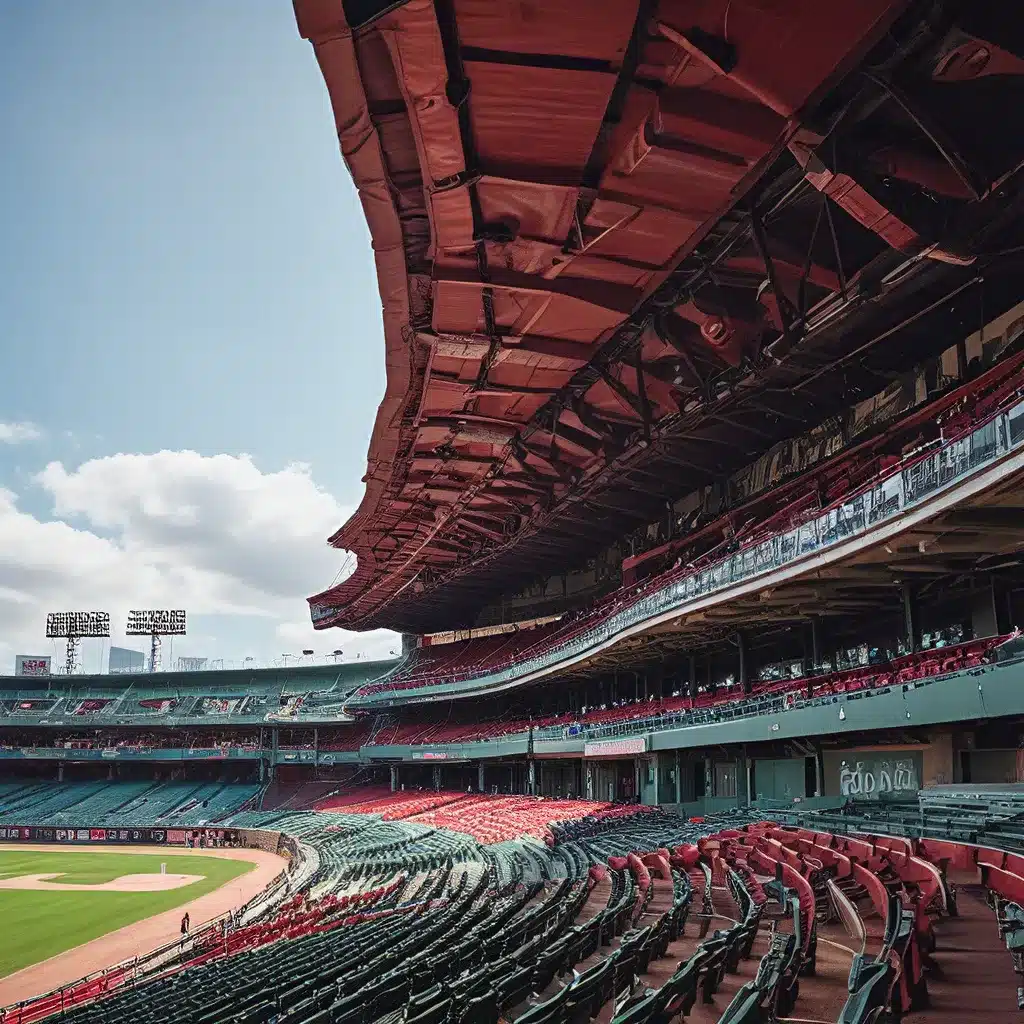
Fenway Park, the iconic home of the Boston Red Sox, stands as a living testament to the enduring legacy of American baseball. Nestled within the vibrant Fenway neighborhood of Boston, this historic ballpark has captivated sports enthusiasts and architecture aficionados alike for over a century.
A Quirky Urban Oasis
Fenway Park’s origin story is one of architectural ingenuity and creative problem-solving. When the ballpark was constructed in 1911, it had to be shoehorned into an existing urban landscape, respecting the preexisting road network. This unique challenge resulted in a quirky configuration that has become an integral part of Fenway’s charm.
The left field dimension, for example, is much shorter than the right field, necessitating the construction of the famous Green Monster, a 37-foot-tall wall that towers over the playing field. Other notable features include overly steep ramps, covered grandstands dotted with columns, and zig-zagging exterior walkways. These architectural idiosyncrasies, born out of necessity, have become beloved hallmarks of the Fenway Park experience.
A Timeless Allure
Despite the modern amenities and state-of-the-art facilities found in many contemporary stadiums, Fenway Park has managed to maintain its timeless allure. In the late 1990s, when the new ownership of the Red Sox proposed building a new ballpark, fans vehemently opposed the idea, passionately defending the cherished character of Fenway.
The backlash from the Red Sox faithful ultimately led the ownership to renovate and make minor improvements to the existing stadium, preserving its historic charm. Today, Fenway Park’s unique character and atmosphere continue to captivate visitors, creating an immersive and unforgettable experience for baseball fans and architecture enthusiasts alike.
A Vibrant Gameday Experience
Stepping into Fenway Park on a game day is akin to stepping back in time. The street in front of the ballpark is closed to vehicular traffic, open only to ticket holders. This creates a lively, festival-like atmosphere, with food stands, souvenir shops, and live music lining the streets on either side.
The energy and excitement of the crowd are palpable, as fans eagerly anticipate the start of the game. The iconic singing of “Sweet Caroline” during the eighth inning has become a beloved tradition, further enhancing the communal and celebratory spirit that permeates the Fenway experience.
Architectural Highlights
Fenway Park’s architectural brilliance extends beyond its quirky exterior. The use of natural light within the stadium is particularly noteworthy, with large windows and a retractable roof that allows for optimal illumination during daytime games.
The concourses and seating areas are designed to provide unobstructed views of the playing field, ensuring that every fan can fully immerse themselves in the game. The attention to detail in the stadium’s design is evident in the intricate metalwork, plaster work, and overall craftsmanship that adorn the various spaces.
A Living Landmark
Fenway Park’s enduring appeal extends beyond its architectural merits. It has become a living, breathing monument to the rich history and tradition of baseball in Boston. The stadium has witnessed countless memorable moments, from epic World Series victories to the legendary exploits of players like Ted Williams, Carl Yastrzemski, and David Ortiz.
The Old Stadium Journey website notes that Fenway Park’s “historic significance and cultural impact” have cemented its status as a must-visit destination for sports enthusiasts and architecture lovers alike. As the oldest continuously operating ballpark in Major League Baseball, Fenway Park continues to captivate and inspire, leaving an indelible mark on all who experience its timeless grandeur.

